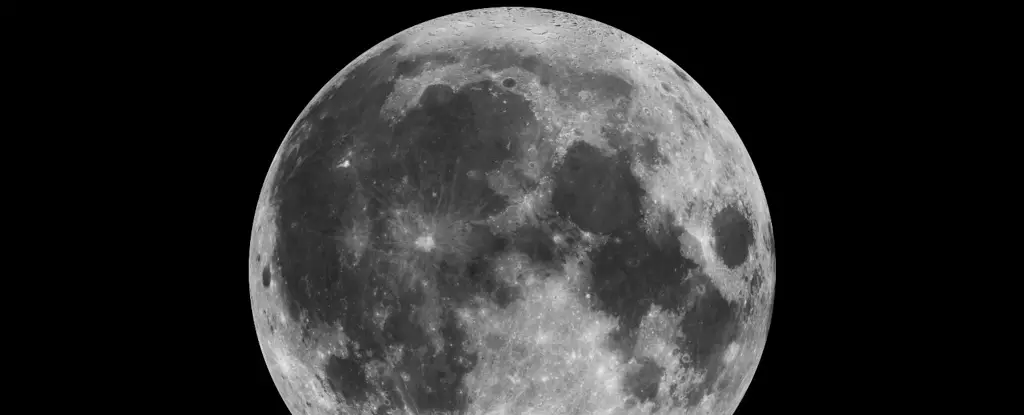As if the cosmos is having a whimsical moment, Earth is set to gain an additional, albeit temporary, natural satellite. Dubbed a “mini-moon,” this newcomer, officially known as 2024 PT₅, is an asteroid approximately 10 meters (33 feet) in width. This unique celestial body will grace our orbit for an estimated period of 56.6 days. Although this isn’t its inaugural encounter with our planet, the implications of its presence offer a fascinating glimpse into the complexities of near-Earth objects and their relationship with our world.
2024 PT₅ was discovered just last month; its orbital path suggests it will settle into Earth’s transient orbit on September 29. This orbital relationship will come to an end on November 25, when the asteroid will break free from Earth’s gravitational grasp, continuing its journey around the Sun. Adding to the interest surrounding this mini-moon is its anticipated return on January 9, 2025, when it will pass within approximately 1.8 million kilometers (1.1 million miles) of our planet, prior to retreating back to the depths of space.
While the initial brief encounter may seem charming, further calculations have revealed that 2024 PT₅ will not return for another visit until November 8, 2055—a date for space enthusiasts to mark on their calendars. The second appearance is expected to be less intimate, with the mini-moon zipping by at a distance of roughly 5.2 million kilometers (3.3 million miles).
The identification of 2024 PT₅ was made possible by the Asteroid Terrestrial-impact Last Alert System (ATLAS), which successfully tracked it the very day before its closest pass—just 567,000 kilometers (352,300 miles) away from Earth. This proximity represents a tantalizing opportunity to study a mini-moon, offering insights into the nature and behavior of such objects.
Astrophysicists involved in the investigation, particularly from the Complutense University of Madrid, utilized data compiled from JPL’s Small-Body Database, leveraging 122 observations over 21 days to discern the characteristics of 2024 PT₅’s trajectory. The resulting calculations indicated a horseshoe-shaped path, characterized by a relatively slow speed that contributes to its brief fling with Earth.
Diving into the mini-moon’s history reveals that 2024 PT₅ is not an unfamiliar traveler. Researchers traced its movement back sixty years, gaining a clearer understanding of its past trajectory and predicting its future paths. Historical data indicates that it has executed close flybys of Earth multiple times, notably in February 2003, April 1982, and March 1960—always remaining a minimum of 8.2 million kilometers (5.1 million miles) away during those visits.
Despite the certainty of its more recent visits, the details of its interactions with Earth before 1937 become increasingly uncertain. Nonetheless, astronomers suggest that its last close encounter was in October 1937, during which it approached at ranges that now appear tantalizingly close.
The occurrence of mini-moons like 2024 PT₅ invites reflection on our ongoing relationship with near-Earth objects. Previous instances of temporary satellites, including a very small rock that orbited Earth for three years until its departure in 2020, accentuate the dynamic and often unpredictable nature of celestial bodies. Additionally, the existence of ‘quasi-satellites,’ which although still orbit the Sun remain entangled in Earth’s gravitational pull, highlight the variety and complexity of these objects.
Such occurrences not only excite interest in astronomy but also underscore the importance of tracking potential asteroid threats. As technology advances and tracking systems improve, the ability to monitor these fascinating entities means we are better equipped to understand, predict, and possibly mitigate potential impacts.
The arrival and eventual departure of mini-moon 2024 PT₅ exemplify the captivating dance between Earth and asteroids within our solar system. With each orbit, each pass, and each future prediction, scientists glean further insights into the nature of our cosmic neighbors. As we prepare to welcome 2024 PT₅, we are reminded of the ever-changing landscape of space, where transient visitors leave lasting impressions on our understanding of the universe.
The presence of such celestial bodies only sharpens our curiosity and commitment to observing the skies above, ensuring that we remain vigilant and engaged with our stellar companions.


Leave a Reply